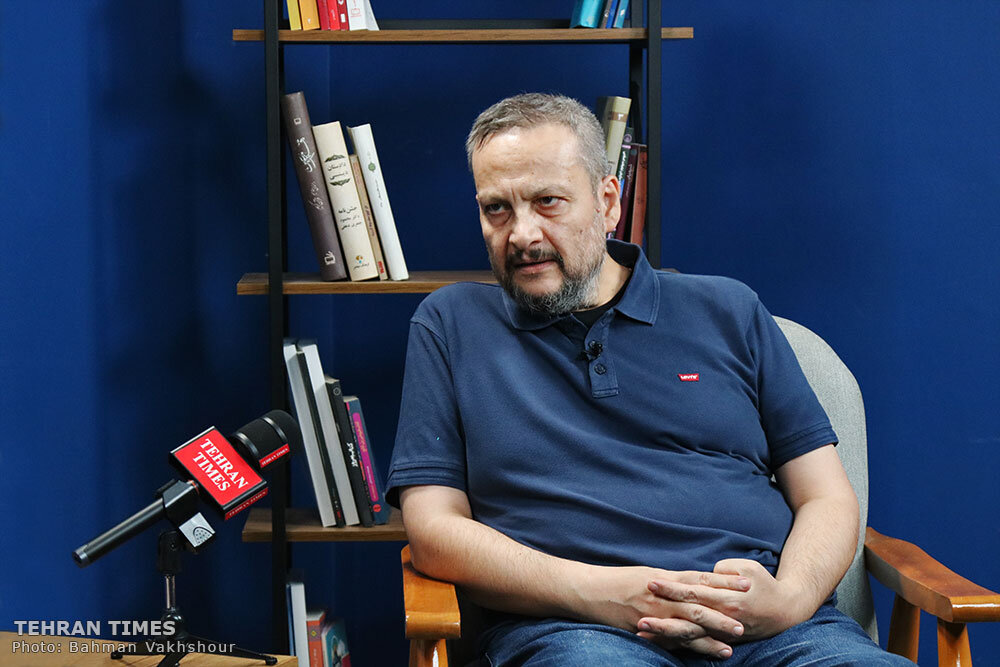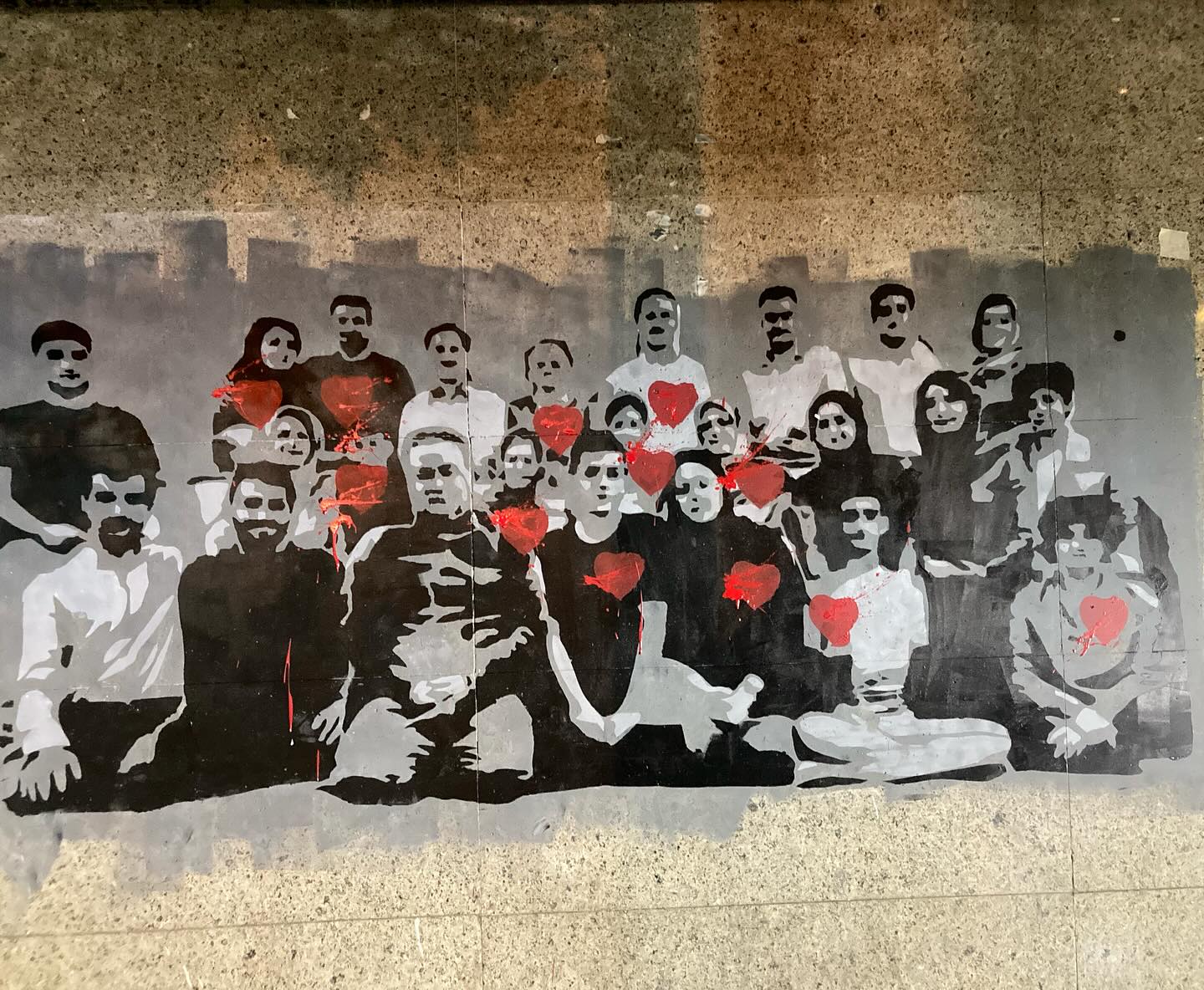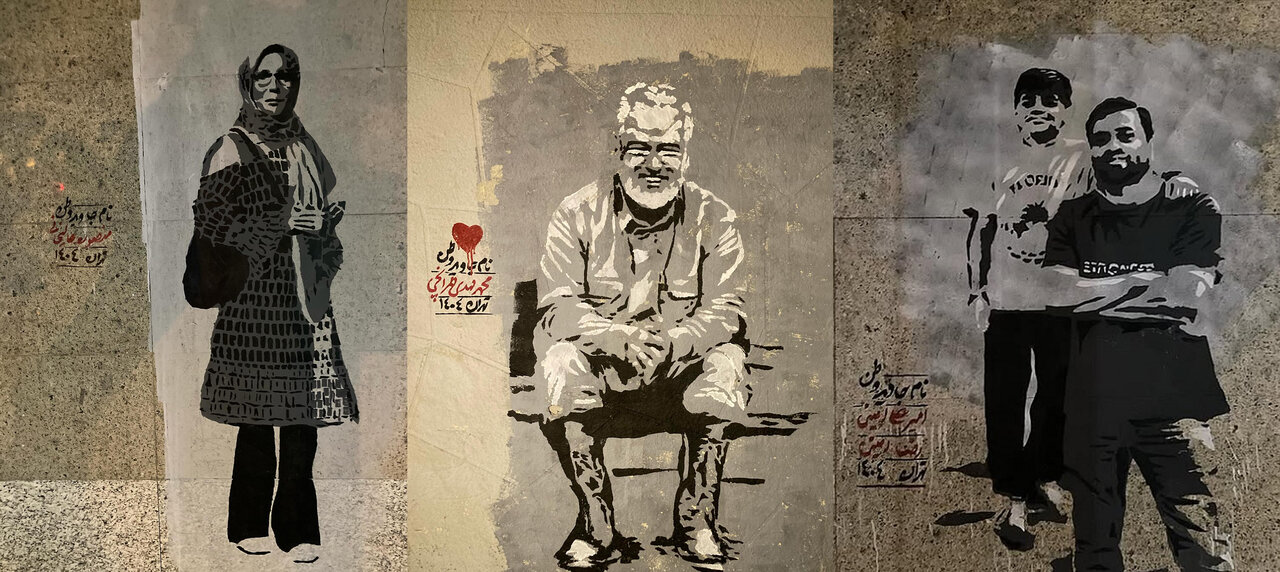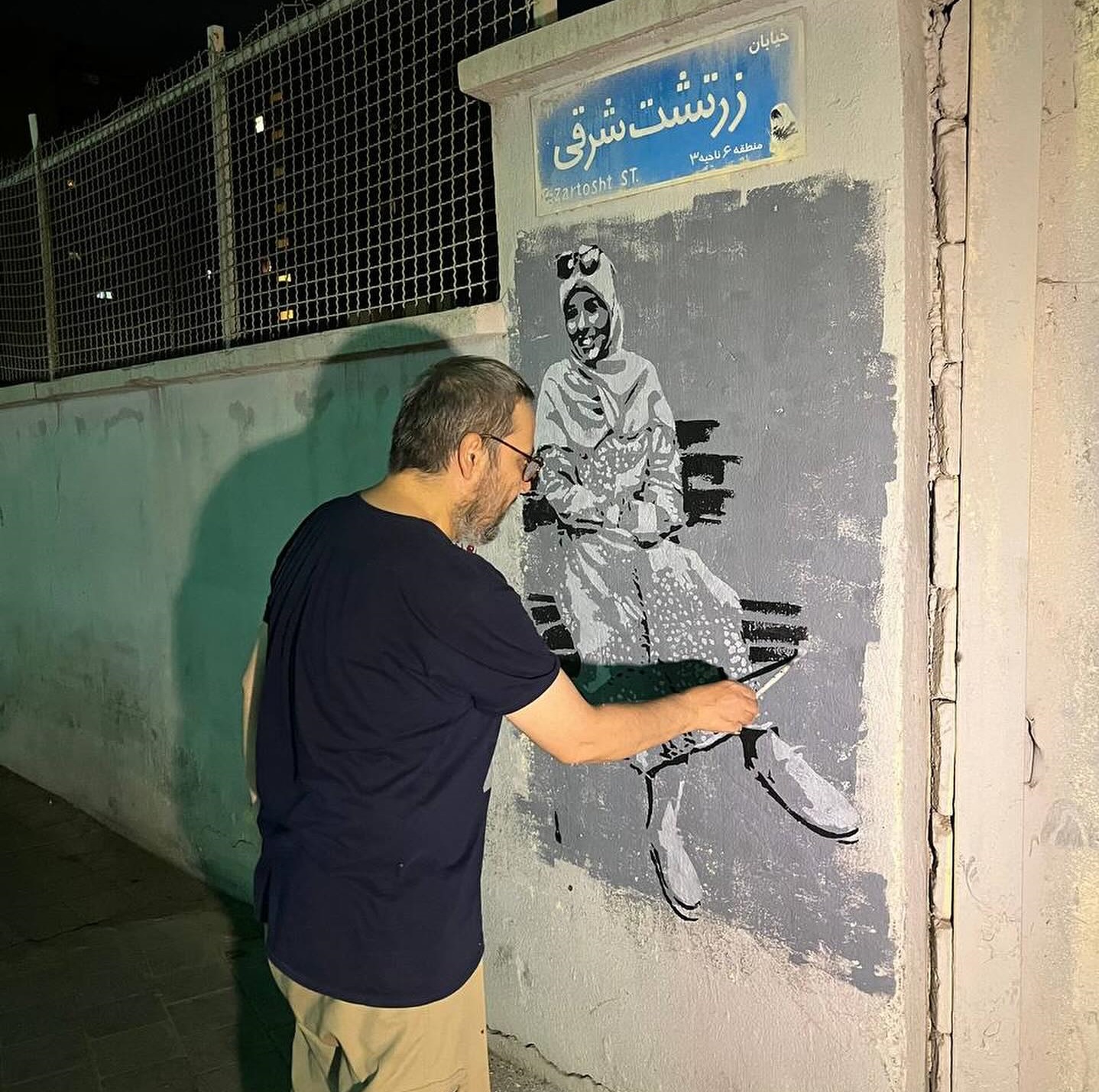Martyrs depicted on Tehran walls in Ali Mirfattah’s painting collection “Immortal Name of Homeland"

TEHRAN – One week after the end of the 12-day war between Iran and Israel, graffiti artist, painter, and journalist Seyyed Ali Mirfattah, 58, unveiled his new stencil art painting collection depicting the martyrs of the Zionist regime’s attacks on Iran.
The images now adorn the walls of several busy streets in the capital after the artist obtained permission from the Tehran Beautification Organization.
Born in Tehran, he studied painting academically. He is a renowned Iranian researcher, critic, and journalist who has been actively involved in graphic design.
Speaking to the Tehran Times, the artist explained how the idea of painting images of the martyrs on the walls of Tehran came about. “The title of this collection is ‘Immortal Name of Homeland’. Sometimes we feel useless and powerless. At certain points in life, we think that everything we know is of no use. On the morning of June 13, when the Israelis suddenly attacked Iran, those who were in air defense, in the army and IRGC, in medical services and firefighting—everyone stood up and helped the country and people. But I had this bad feeling: ‘What can I do right now? What good is painting?’ That sense of helplessness brings disappointment with it. Then I remembered that back in my youth, during the eight-year Iran-Iraq war, I used to paint portraits of martyrs, Imam Khomeini, and martyred commanders on the city walls. So, I decided to do the same thing again”.
Regarding the number of works completed, challenges in the process, and the final goal of the project, he added: “So far, 17 images of martyrs have been painted on the city walls. One of my challenges is the information bank. That is, I still don’t have complete images of the martyrs. Some friends and journalists are trying to put together a comprehensive database, and so far, images of 200 martyrs have been collected, but there’s still a lot to do.”
“In collaboration with the Tehran Beautification Organization, it has been decided to dedicate one wall in the city as ‘Immortal Name of Homeland,’ where the images of all the martyrs will be painted and remain as a memorial. Right now, we are in the process of finding a suitable location for it,” he noted.
On the choice of locations where martyrs’ Images have been painted so far, Mirfattah said: “One of the walls was the wall of the University of Tehran. Since the funeral ceremony of the martyrs was to be held there, we painted full-length images of two martyred commanders on the two entrance columns of the university. I tried not to let this work become a ceremonial and routine act. That’s why I avoided just painting portraits. I tried to find full-length figures of the martyrs and paint them life-sized, with minimal colors, and without symbols, so that when citizens walk on the sidewalk and see them, they feel like they are seeing another citizen, someone just like themselves, equal and at their level”.

Speaking about the technique used and the time needed to complete each work, Mirfattah said: “After the (1979 Islamic) Revolution, I used stencils. Back then, we made images on discarded X-ray films with a razor blade, and I had become skilled at that. Now, I’ve found a suitable plastic sheet and turned it into stencils. Most of the work is done in the studio, and when I go to the street, it only takes the time to install the stencils, apply the paint, and wait for it to dry—it doesn’t take long”.
Regarding expanding this work to other cities, he said: “I plan to share these stencils, once they’re finished, with interested artists even outside of Tehran, so that they can use them to create artworks in other places as well”.
In response to the question about people’s reactions to the works, the artist said: “Some of the feedback has been on social media, where people showed a lot of kindness. Interestingly, people from different walks of life and with different tastes, both Iranians inside and outside the country, who have national pride and love for the homeland, all showed affection. Of course, there are always those who discourage you, but they don’t matter. What I saw from the majority of people was empathy, encouragement, solidarity, and respect for the martyrs. In particular, some families of martyrs who happened to see the works felt a sense of comfort, as they saw that a fellow citizen had painted images of other citizens—martyrs—on the city walls. They reached out and showed love and appreciation”.

On the impact of murals on urban architectural aesthetics, Mirfattah said: “Since I have a background in journalism and have specifically worked on Tehran, with two books published, I can say that we have several serious problems in Tehran, including architectural ones. The aesthetics of Tehran are problematic, caused by many factors. From a certain period, the city’s aesthetics and architecture went astray. Unfortunately, art doesn’t have the proper place it deserves in this city. With Tehran’s special political position, its streets should not look like this, surrounded by commercial billboards. I’m not saying I’m against them; they have their place. But Tehran needs a proper visual identity”.
“I don’t mean we should go for exaggerated murals either because we’ve done some of that before, and it hasn’t had a positive impact. We’ve behaved too propagandistically with murals. Irrelevant use of symbols and excessive repetition have stripped them of meaning. So maybe now is a good time to reflect on mural art in Tehran and invite skilled painters and architects and create a space for them to produce valuable murals, which could even attract tourists,” he asserted.
He pointed to examples around the world where murals hold special value—such as in Paris, New York, Mexico City, and various cities in South America. “We have world-class artists who are internationally recognized. It would be great to provide conditions for them to turn many important subjects, not just war, into artworks, bringing paintings and murals to city walls, metro stations, or installing sculptures in squares, making our city a source of pride,” he stressed.

When asked about the new generation of artists, their concerns, and differences from past generations, Mirfattah said: “Every generation shows its capacities and talents when tested. Just as the generation of artists during the 1979 Islamic Revolution and 1980-1988 Iran-Iraq war showed bravery and heroism, in this 12-day war too, we saw glimpses of the new generation. Personally, I was already hopeful about them, but here we saw clear signs. This generation emerged honorably from this event”.
“Certainly, if the new generations are given the right opportunities, they will step up and produce even more worthy works. The problem is that we haven’t given them the chance to present themselves—I mean us, the older generations. With all their differences from us, from their clothing to their beliefs, it’s good for our culture and art to let these energetic, fresh generations enter the field, and personally, I am hopeful about them,” he stated.
Mirfattah is mostly known for his activities in the field of journalism. He started his career as a journalist at Soureh Weekly. He had worked as an editor in that magazine as well as other magazines such as Mehr, Negah, Kargadan, as well as Roozegar and Etemad dailies.
In addition to journalism, he has also authored several books and worked as a screenwriter. As an artist, he has many experiences in the field of graphic design, including the poster design for several Iranian movies.
SS/SAB
Leave a Comment